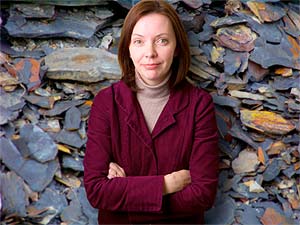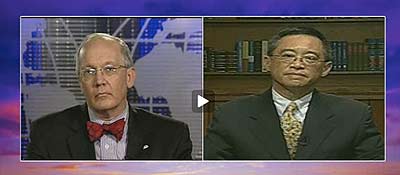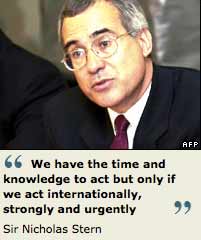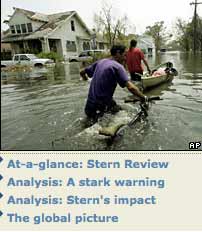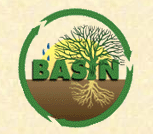Contains the keyword experts
Sourcewatch page provides overview including links to directors, funders, and board members.
See FAS page on Earth Systems:
"Over the next century the earth’s resilience and adaptive capabilities will be stressed by the demands of global climate change, environmental degradation, a population increase of two billion people, and the accompanying increased resource and energy demand.
These stresses will place an additional burden upon the earth’s natural systems and the processes and resources that drive these systems. Future system scarcities and imbalances represent a security concern with the potential to destabilize and weaken existing political, social, and economic structures. And as these natural systems are inherently highly interdependent, it is necessary for them to be analyzed and considered systemically.
The Earth Systems Program seeks to address these issues by developing and promoting sustainable, scientifically sound, and inclusive solutions, policies, and technological developments."
"The Federation of American Scientists (FAS) was founded in 1945 by scientists who had worked on the Manhattan Project to develop the first atomic bombs. These scientists recognized that science had become central to many key public policy questions. They believed that scientists had a unique responsibility to both warn the public and policy leaders of potential dangers from scientific and technical advances and to show how good policy could increase the benefits of new scientific knowledge."
FAS works to challenge excessive government secrecy and promote public oversight with their FAS Project on Government Secrecy. Part of the project includes the distribution of the free electronic newsletter Secrecy News, which provides informal coverage of new developments in secrecy, security and intelligence policies.
Includes video interview with Hans Bethe on Atomic weapons.
Please note that information taken from Wikis should be verified using other, more reliable sources. It is a good place to start research, but because anyone can edit a Wiki, we do not recommend using it in research papers or to obtain highly reliable information.
Not So Fast, Natural Gas: Why Accelerating Risky Drilling Threatens America’s Water
Some energy analysts are predicting that natural gas will be the fuel of the future if advances in drilling technology allow drillers to tap into domestic shale rock formations on a large scale. But because of the impacts that the technology can have on water, natural gas could become our next energy disaster.
Food & Water Watch works to ensure the food, water and fish we consume is safe, accessible and sustainably produced.
Learn more: read about our victories.
See: Poisoned Profits
See: Blue Covenant
See: Tox Town
UB geologist Tracy Bank and colleagues found that uranium and hydrocarbons in Marcellus shale are not just physically, but also chemically, bound.
Scientific and political disputes over drilling Marcellus shale for natural gas have focused primarily on the environmental effects of pumping millions of gallons of water and chemicals deep underground to blast through rocks to release the natural gas.
But University at Buffalo researchers have now found that that process -- called hydraulic fracturing or "fracking"-- also causes uranium that is naturally trapped inside Marcellus shale to be released, raising additional environmental concerns.
The research will be presented at the annual meeting of the Geological Society of America in Denver on Nov. 2.
See: Casey Junkins. November 20, 2010. The Intelligencer Wheeling News-Register. "Profs: Wells Pose Threat: Fracking lets loose uranium, other hazards".
Dan Bain, assistant professor of geology at Pitt, and Radisav Vidic, professor of environmental engineering at Pitt, expressed concern about drilling for gas in areas throughout West Virginia and Pennsylvania because of the region's great history of coal production.
"Pennsylvania is filled with abandoned coal mines. I don't want to see this happen with gas drilling," Bain said.
An AB Resources well site about 6 miles outside Moundsville's city limits was home to a June 7 explosion, due to workers breaching a pocket of methane in an old coal mine. After injuring several workers, the charge ignited a large fireball that burned for several days.
The Collaborative on Health and the Environment (CHE) is an international partnership committed to strengthening the scientific and public dialogue on the impact of environmental factors on human health...
Underlying all of CHE's activities is a commitment to strong, uncompromised science. CHE Partners share the conviction that under conditions of scientific uncertainty, when evidence of the potential for harm to human health and the environment is scientifically compelling, precautionary measures that emphasize exposure prevention should be undertaken.
After decades of declining US natural-gas production, a new and powerful drilling technique that fractures rock with high-pressure fluid is opening up vast shale-gas deposits in Texas, Colorado and now many parts of the Northeast.
Hydraulic fracturing or "fracking" injects tons of toxic chemicals into the ground in order to break up shale beds rich in natural gas. Researchers, health and environment experts, and community groups have expressed strong concerns about these chemicals contributing significantly to air and water pollution.
The shale gas reserves, however, are seen by a number of companies, states and landowners as an enticing economic opportunity that could reap billions while lowering residential heating bills. The Environmental Protection Agency began public hearings last March to investigate the issue, and a number of citizen protests have recently been held in regions where fracking is already being undertaken or proposed.
This CHE Partner call featured four leading researchers in different fields of expertise to discuss the potential human and environmental health implications of fracking.
Featured speakers included:
- Sandra Steingraber, PhD, author of Living Downstream
- Theo Colborn, PhD, President, The Endocrine Disruption Exchange (TEDX)
- Tony Ingraffea, PhD, PE, Cornell University
- Weston Wilson, Retired EPA Region 8.
See: Poisoned profits : the toxic assault on our children
See: The Case for a Truth and Reconciliation Commission on Toxic Hazards
Sharon Wilson, Texas OGAP Organizer was flown to EPA headquarters in North Carolina to present four case studies of health impacts caused by natural gas extraction in the Barnett Shale. She met with the top rule makers in the Office of Air Quality Planning and Standards who are working on new rules for the oil and gas industry.
See: Barnett Shale Health Impacts - Case Studies
She brings our attention to the disruptive health impacts of mountain-top removal for frac sand in Chippewa, Wisconsin. Read her post on Bluedaze, Mountain Top Removal for Hydraulic Fracturing Sand.
"Walter, do you believe natural gas can be extracted in an environmentally safe manner?
WALTER HANG: Not under the current regulatory scheme. If they do things better, if they require financial surety, we will find out. But under the existing regs, it cannot be done safely. The data proved that beyond a shadow of a doubt."
Richard Haut is from Houston Advanced Research Center and is an expert on hydrofracking. Walter Hang is President of Toxics Targeting, and provides data to engineers, municipalities and homeowners on possibly contaminated properties.
See: Mixplex articles on Global Warming Experts and Climate Science Watch to read more about the compelling reasons to watchdog government regulation at best and challenge those who claim that peer-reviewed scientific analysis will weaken business development and national security.
The opportunities to have both an educated public and the scientific community comment on the many environmental impact statements required for the mining and extractiive industries is a benefit to both the public and industry according to this report: Pew Environment Group (PEG) Factsheet: Industry Opposition to Government Regulation (PDF), October 14, 2010. (Neil Zusman, 2010-08-28).
See also: Environmental Integrity Project (EIP)
EIP combines research, reporting, and media outreach to spotlight illegal pollution, expose political intimidation of enforcement staff, and encourage federal and state agencies to take enforcement action to stop these practices.
See also: Nora Eisenberg. Onshore Drilling Disasters Waiting to Happen: An Interview With 'Gasland' Director Josh Fox | The Nation
Eisenberg: In your sleuthing, what was the most surprising discovery you made?
Josh Fox: Most baffling to me was how much the gas industry was able to get away with—like [insisting] that drilling is safe. Most people when they sign the lease don't realize that what they're in for is a complete industrialization of their property and an enormous problem with their air and water. The gas industry is somehow able to move into an area and say that everything is going to be just fine, you're just going to make a lot of money.
See: Gasland Trailer
Rhiza Labs | Online Mapping Software for exploring, visualizing, and sharing crowdsourced data on the web.
June 30, 2010
Geo Animation: Marcellus Shale Permits in PA Over Time
by Josh Knauer
Here at Rhiza Labs, we’re really excited to have a whole bunch of new public projects launching with our clients. These clients are pioneers who are exploring new ways to encourage communities of interest to aggregate data and share it publicly, while also providing these communities with incredibly powerful data analysis and visualization tools. One of the latest projects to launch, FracTracker.org, involves many dozens of community organizations that want to tract the impacts of Marcellus Shale gas wells in their communities.
I wanted to see how widespread this type of gas well drilling practice was, so I took the Marcellus Shale gas well permit data from the PA Dept of Environmental Protection and created a quick snapshot of the data, and then just clicked on the Action button in the upper right corner of the snapshot page and chose the options “Download as –> KML” to bring it into Google Earth. I then just hit “play” on the time slider within Google Earth.
According to Sourcewatch, The Heartland Institute 2009 International Conference on Climate Change, held March 8-10th in New York at the Marriott New York Marquis Times Square Hotel, brought together scientists, economists, legal experts, and other climate specialists to "confront the issue of global warming."
These specialists, all climate change skeptics, aim to call attention "to new research that contradicts claims that Earth’s moderate warming during the 20th Century primarily was man-made and has reached crisis proportions."
See: The 2009 International Conference on Climate Change.
The conference was organised and "sponsored" by the Heartland Institute, a U.S. think tank that in preceding years received substantial funding from Exxon for its work downplaying the significance of global warming.
Please note that information taken from Sourcewatch should be verified using other, more reliable sources. It is a good place to start research, but because anyone can edit Sourcewatch, we do not recommend using it in research papers or to obtain highly reliable information.
See: BBC News. Oct. 31, 2006. "Climate change fight 'can't wait'"
The world cannot afford to wait before tackling climate change, the UK prime minister has warned.
A report by economist Sir Nicholas Stern suggests that global warming could shrink the global economy by 20%.
But taking action now would cost just 1% of global gross domestic product, the 700-page study says. (Executive Summary, PDF, 27 pp.)
See: Alan I. Leshner. Dec. 9, 2009. Washington Post. "Don't let the climate doubters fool you."
See: The American Association for the Advancement of Science (AAAS) Reaffirms Statements on Climate Change and Integrity. 12/04/09.
See: Commentary: Dr. Michael J. Economides, editor-in-chief of the Energy Tribune, says environmentalists wrong on hydrofracking. Economides was short-listed for the EPA 2010 Hydraulic Fracturing Study.
Michael J. Economides is the editor of The Energy Tribune, and Professor of Chemical and Biomolecular Engineering at the University of Houston.
See: Ann Alexander. Oct. 22, 2010. NRDC Switchboard. "Climate change denial from the Book of Hesitations".
On 9-15-10, attending the EPA meeting on hydraulic fracturing for shale gas, professor of ecology and environmental biology, independent scientist Robert Howarth, Ph.D.,

told a news conference that natural gas extracted from shale is nearly as dirty as coal or perhaps even dirtier in terms of greenhouse gas footprint...
good grief:
...Our public comment to EPA was, in part, as follows:
Based on what we know so far, the EPA should order immediate suspension of high-volume hydrofracking until your study is complete. Let science guide policy. Otherwise we’re conducting a massive human, animal and earth experiment.
The gas will be there; it's not going away. Ideally any further carbon extraction at all should be banned while we accelerate development of sustainables but since that's probably not in the cards politically, it's imperative we at least do everything we can to reduce the harm we are doing to ourselves and our environment by extending our carbon binge in shale gas extraction. As others have mentioned,
I especially urge you to incorporate into your study the research of Prof. Robert Howarth and his team at Cornell on the methane greenhouse footprint that makes shale gas look nearly as dirty as coal if not even worse.
Opens with a great critique of the word "sustainability".
We followed a trail of yellow liquid draining from the back of the site downstream past a neighboring industrial bakery and into the Edison Glen and Edison Woods residential developments.
There we videotaped a child playing in the poisoned stream who told us it was a good place to hang out and look for frogs and turtles. I subsequently found out that the vacant Superfund lot was a playground for local children, the chemical lagoons were their wading pools, and adults routinely scavenged materials from the site.
Bob [Spiegel] called the Environmental Protection Agency (EPA) and when their response seemed to be limited to posting a few warning signs, he and his friend rented a movie theatre and showed their videotapes to increasingly agitated crowds. “We scared the hell out of everybody,” Spiegel says. The EPA immediately scheduled a public meeting.
--Molly Ivins’ Bushwhacked (Chapter 3)
New Jersey non-profit that among other activities, helps citizens engage in and advocate for the environmental well-being of their communities.
See: How to apply.
Gas drilling brings with it the need to inject methane gas into the ground to store it. Although gasoline and natural gas are chemically unrelated, the storage of both natural gas and fracking brine in underground rock formations the potential spills associated with trucking the waste and storing it in open plastic lined pits may contribute to the contanimation of well water.
The secret formula of the fluids used by the gas industry have made it hard for researchers to do the type of analysis Joe Ryan has done about gasoline.
Dr. Joe Ryan is with the Environmental Engineering Program in the Department of Civil, Environmental, and Architectural Engineering at the University of Colorado. He discusses benzene and its potential to pollute ground water in even small amounts.
At a July 9, 2010 EPA meeting in Texas, as reported by KERA. North Texas Public Television and Radio, Tim Ruggiero says he's living proof the state isn't protecting the public.
"I am one of those cases of contaminated drinking water. It's why I'm here tonight," Reggiero told the EPA.
Ruggiero says he tested his water just before and after gas producers began drilling on his property. He says water samples collected after the drilling started contain an unknown chemical similar to the gas additive MTBE. Ruggiero also complains of air contamination and state agencies unwilling to take action.
How much gasoline does it take to contaminate drinking water? Joe Ryan explains:
Not much. Prior to the EPA's 1988 UST regulations and their final implementation deadline in 1998, a slow leak from a 10,000 gallon gasoline storage tank at the neighborhood service station was virtually undetectable to the station operator but still quite hazardous to nearby groundwater supplies. The hazards of gasoline are mainly attributable to the BTEX compounds -- benzene, toluene, ethylbenzene, and xylenes (see below).
The benzene content of typical gasoline is 0.76% by mass (gasoline composition). A spill of 10 gallons of gasoline (only 0.1% of the 10,000 gallon tank, a quantity undetectable by manual gauging and inventory control) contains about 230 grams of benzene (using a gasoline density of 0.805 grams per milliliter). The EPA's Maximum Contaminant Level (MCL) for benzene is 5 parts per billion (ppb), or 5 micrograms per liter, in drinking water. The density of gasoline is about 0.8 grams per milliliter, so the benzene in a 10 gallon gasoline leak can contaminate about 46 million liters, or 12 million gallons, of water!
INVITATION BASIN is a community project actively seeking public participation.
BASIN is supported by the US EPA, the City of Boulder, the Keep it Clean Partnership, BCWI and BCN
See:U.S. EPA. Delivering Timely Environmental Information to your Community Boulder Area Sustainability Information Network(BASIN). September 2001. (98 pp.)
See: Boulder Area Sustainability Information Network (BASIN) EPA Grant Number: R827057









